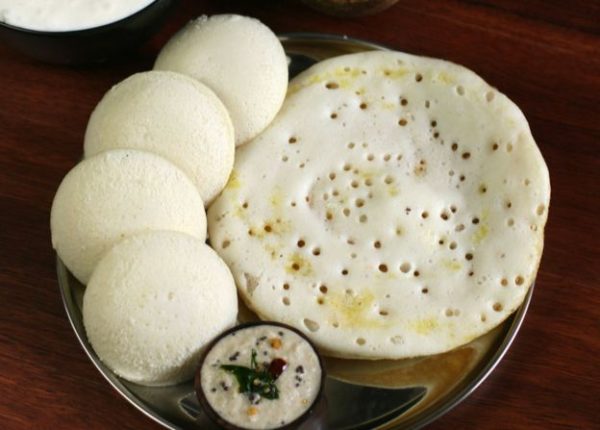Quick, social media-friendly recipe videos have changed the way people approach cooking. The BBC spoke with Hebbar’s Kitchen, an online platform that has adopted the format, with a focus on Indian audiences and vegetarian food.
These two-minute long videos, packaged like a mini cooking show, have managed to “break the monotony of having to flip through recipe books,” says Sudarshan Hebbar, an IT consultant who helps run Hebbar’s Kitchen, which was started by his wife, Archana.
In 2016, Mrs Hebbar started a blog, filled with her favourite recipes from home – the south Indian state of Karnataka. She had moved to Australia with her husband in 2014, and was trying to get a job as a software testing professional. With no local experience in the region, it was tough, she told BBC Telugu’s Sharath Behara.
To pass the time, she opened a WordPress account and began to post recipes of South Indian staples like tomato sambar (a lentil-based vegetable stew), rava idli (a savoury cake made from semolina) and masala upma (a thick porridge made from dry roasted semolina or rice flour).
“There wasn’t a lot of traffic or response to my blog,” she says, “but I kept seeing these quick recipe videos on my phone, and I was inspired.”
First made popular by Buzzfeed when it launched its food vertical Tasty, this approach towards cooking has been successful precisely because it mimics the immediacy of social media – the food has been prepped, cooked and photographed within a few minutes.
When Mr Hebbar first saw a Tasty video, he was instantly curious – both about the food and its presentation. “It’s a unique way of making cooking accessible – you’re not overwhelmed by a list of ingredients or cooking time,” he says.
Mr and Mrs Hebbar noticed a gap in the market – there was no food account that was cooking up some good old fashioned vegetarian South Indian dishes.
“The videos we saw on Tasty and other international pages were creative and engaging, but I couldn’t relate to the food,” said Mr Hebbar, who is a vegetarian. “I felt nostalgic for the kind of meals I used to eat at home.”
Hebbar’s Kitchen, he told the BBC, was one of the first to use Buzzfeed’s simple template to share home cooked, everyday Indian recipes.
With an iPhone and a selfie stick, Mrs Hebbar made the move to video – while she developed the recipes and did the cooking, her husband shot and edited the videos. “The response was amazing – I was surprised by how much of a difference putting it on video made,” she says. Soon, they upgraded to a DSLR camera and enrolled in some online professional video editing courses.
Hebbar’s Kitchen has come a long way since. Their most popular video – a simple recipe of the Indian dessert rasgulla, a spongy ball-shaped dumpling cooked in sugar syrup – has got more than 17 million views.
Their Facebook page has nearly 6.4 million subscribers and their videos have garnered more than 1.6 billion views. According to data released last year by a video analytics company, Hebbar’s Kitchen was the third most popular Indian video publisher on Facebook.
While there were a handful of Indian chefs experimenting with the format, their focus was on Indian dishes found in fancy restaurants, he adds. “The secret, we found, was to keep it simple and traditional – our first video was a South Indian style raita [a salted yoghurt mixed with vegetables], made with fenugreek seeds.”
“Unlike when we began, there are a lot more competitors now,” says Mr Hebbar, adding that it is a quickly growing market. A scroll through Facebook throws up a half dozen or so similar pages focused on creating innovative Indian dishes, and have more than 100,000 subscribers. Other popular pages include Om Nom Nom, Yum Curry by Pragya and Gobble.
Hebbar’s Kitchen also have a mobile app, which Mr Hebbar thinks will be the way forward. “But most importantly, we will continue to do what we did to stand out – stick to our roots and craft recipes that make our viewers want to cook,” he says.



Leave a reply